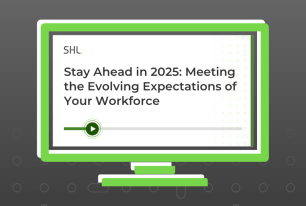3 Types of Bias That Derail Diversity and Inclusion Efforts
Cognitive diversity has major benefits for organizations, but leaders must acknowledge different forms of bias as a first step towards true inclusion.
Share
Diversity holds great potential for businesses and their employees. However, the impact of diversity depends on the degree to which the organization’s leadership focuses on the development of a sustainable diverse culture. The goal of inclusive leadership is to create an organization where people feel involved, respected, and connected – where the richness of ideas, backgrounds, and perspectives are harnessed to create business value and job satisfaction. The challenge of inclusive leadership is to release the innate innovative potential in diverse organizations by turning some of the perceived inconvenient differences into transformative business results.
Cognitive Diversity
One of the many benefits of diversity is that it helps teams and organizations process information from multiple perspectives. Inclusion efforts have historically focused on visible factors like gender, age, and ethnicity; however, cognitive diversity is a less visible and very important type of diversity.
Organizations that actively support and include their employees’ cognitive diversity have proven to perform better. Teams and individuals simply make better and more sustainable decisions when they are exposed to cognitive diversity (Reynolds & Lewis, 2017).
Even though it is often the logic that adding diversity to a group automatically contributes new perspectives, research has shown that group members who come from different backgrounds seldom contribute to greater diversity in the long run. This is primarily because people unconsciously and gradually adopt the opinions and beliefs of the majority in a group (Rose, 2007).
Therefore, it is not enough to simply hire a diverse team — It is crucial that organizations and leaders ALSO adopt an inclusive leadership mindset, that helps them activate the diversity that creates a sustainably inclusive environment.
So how do you succeed with developing and sustaining a diverse and inclusive culture?
Successful Diversity Requires Collaboration and Active Inclusion
In order to benefit from the greatest outcomes that stem from diversity, people in the organization must accept, respect, and embrace diversity. Leadership should encourage the group to work as a team while eliminating the risk of group thinking. The first step towards this inclusive culture is to acknowledge our neurobiological starting point and realize that we all have sets of cognitive understanding that create bias within us.
Leadership should encourage the group to work as a team while eliminating the risk of group thinking.
3 Types of Bias That Derail Diversity and Inclusion
Leaders who want to adopt an inclusive mindset within their teams should acknowledge these three conditions that we are all faced with when making decisions:
- Cognitive bias – The human brain cannot process all the information to which it is exposed. Therefore, we are often tempted to make quick decisions based on conscious memories, which are typically based on experience and/or instincts. However, not all these decisions are desirable. Sometimes we find ourselves making the same (bad) decisions because we have an unconscious bias that affects our decision-making without us being aware. To develop an inclusive mindset, you must actively try to become aware of your cognitive bias, and how that bias impacts decision making.
- The illusion of objectivity – Even the most skilled and diplomatic leaders will always be subjective in their decision-making. As we become aware of our cognitive bias and develop our inclusive mindsets, we can move further from subjective decision-making – but complete objectivity in decision-making is an illusion. It is important to include ideas and opinions from a cognitively diverse group of people in order to gain greater objectivity in decision making.
- Organizational bias – Even though we tend to make decisions based to our personal bias, there is also a risk for Group Thinking where the effect of different perspectives is diminished because we are highly vulnerable to social conformity. This most often occurs in groups of people with similar perspectives and experiences, but it can also happen within groups of diverse people, who unconsciously and gradually adopt the opinions and beliefs of the majority in a group. Inclusive leadership openly encourages the difference of ideas and opinions on a team to continue cultivating the value of cognitive diversity.
The movement towards inclusive leadership takes time, a lot of support, and deliberate considerations.
When we work with organizations and people to develop an inclusive mindset, it is also a cultural journey. It requires great effort, openness, acceptance, and the ability to reflect on personal and organizational bias. This is not done in a quick-fix approach but requires practice.
Making an organization a place where all employees thrive is essential to business success. There is a strong link between social responsibility and financial performance in this double bottom-line approach. Even though diversity can affect this double bottom-line positively, it is, however, not only a matter of adding as much diversity as possible. It is about making solid considerations about diversity.
Contact us today to learn how SHL can help you intentionally build a cognitively diverse organization.









